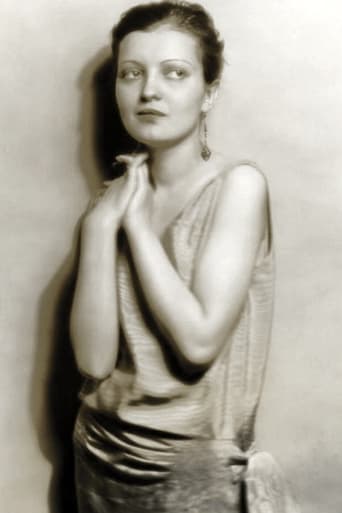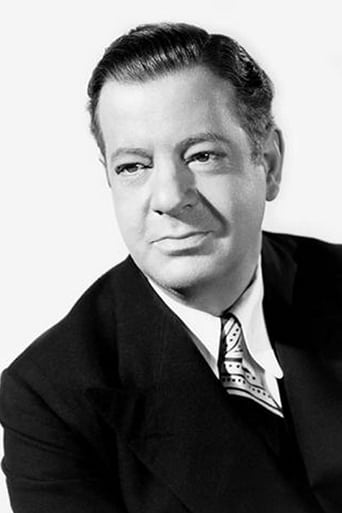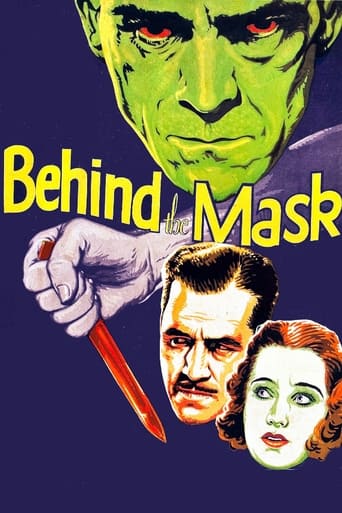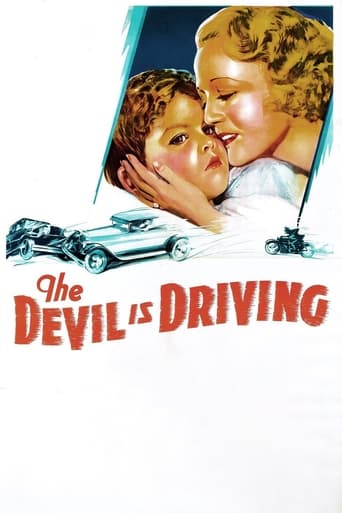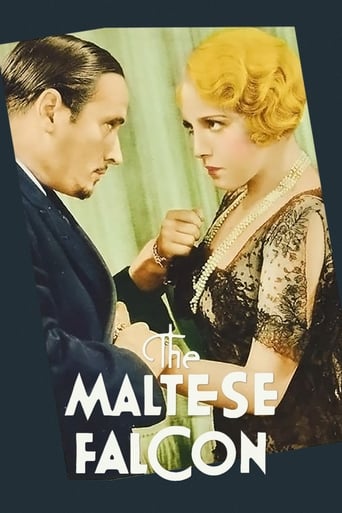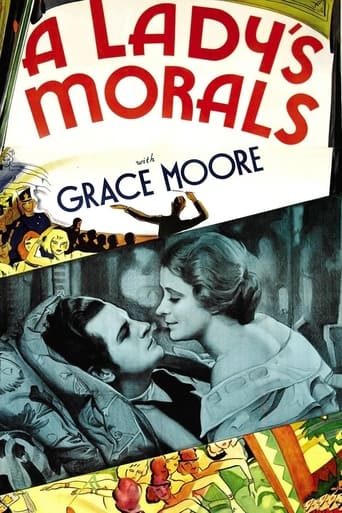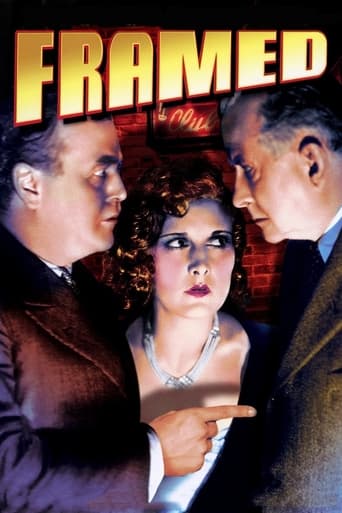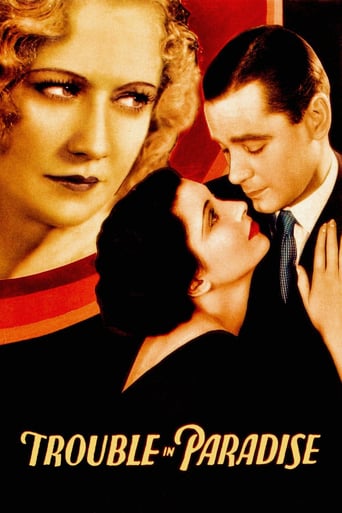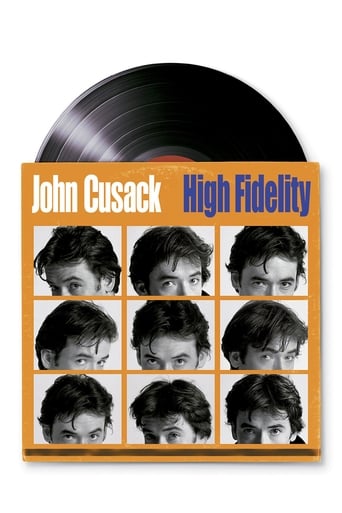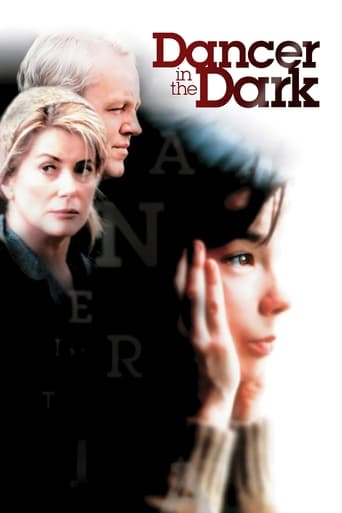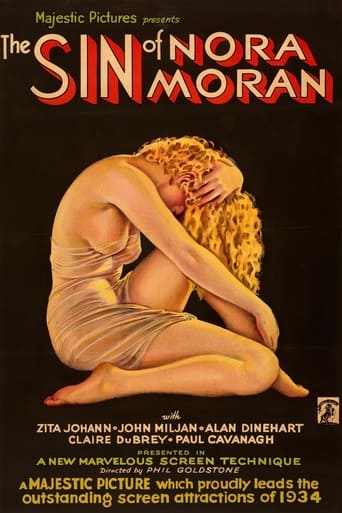

The Sin of Nora Moran (1933)
Nora Moran, a young woman with a difficult and tragic past, is sentenced to die for a murder that she did not commit. She could easily reveal the truth and save her own life, if only it would not damage the lives, careers and reputations of those whom she loves.
Watch Trailer
Cast


Similar titles
Reviews
Wonderful Movie
Crappy film
It really made me laugh, but for some moments I was tearing up because I could relate so much.
The storyline feels a little thin and moth-eaten in parts but this sequel is plenty of fun.
Although this film plainly avails itself of the relaxed censorship available to pre-Code Hollywood, it's quite unlike anything else from that era; its most obvious pre-Code hallmark being the astonishing amount it manages to pack into just over an hour's running time. Long before the end, your head is spinning from the film's unending assault on your senses; and critics at the time just didn't get it (not helped by the catchpenny title derived from 'The Sin of Madelon Claudet', for which Helen Hayes had recently received an Oscar). Mordaunt Hall of 'The New York Times', for one, dismissed it simply as "all very muddled and parts of it are apt to be exceedingly depressing." He also claimed that it "strives to emulate the "narratage" story treatment as it was done in 'The Power and the Glory'". Since production of 'The Sin of Nora Moran' wrapped at the end of June 1933 while William K. Howard's 'The Power of the Glory' (often stated to have inspired the non-linear structure of 'Citizen Kane') opened in August, this has to have been simple coincidence; and 'The Sin of Nora Moran' goes way, way beyond Howard's more celebrated film in its use of the form. To Hall, 'Nora Moran' was just "a bewildering mass of scenes", but seen today it's perfectly easy to follow; you just never know what new technical flourish the extraordinary hybrid of narrative and visual elements past, present and future this film is going to next throw in your face.Polish-born independent producer-director Phil Goldstone (1893-1963) was a silent film veteran and former president of Tiffany Pictures who had recently acquired the poverty row outfit Majestic Pictures with the intention of upgrading its product. 'The Sin of Nora Moran' was the first of only two talkies he directed (the other being a 1937 version of that old exploitation warhorse, Eugène Brieux's 'Damaged Goods'); which makes his mastery of the new medium all the more remarkable, aided by Ira Morgan's Germanic photography and editing by Otis Garrett (later a director himself) that makes Eisenstein look like Mizoguchi. (An uncredited Heinz Roemheld contributes an energetic score that never lets up for a moment; adding to the film's continental feel.) The film completed, Goldstone continued to demonstrate his commitment to this labour of love by commissioning a sophisticated poster from Alberto Vargas that is better known today than the film itself.The most surprising thing about this film is that it's not a remake of a European original; since it certainly feels like one. It was actually based on a play by newspaperman Willis Maxwell Goodhue (who died in 1938) originally titled 'Burnt Offering'; and as befits the title, the script at one point goes into remarkably graphic detail about the process of execution in the electric chair. Nora is injected with an "opiate" (the word used) to prepare her for the end; which paves the way for the hallucinatory stream of consciousness that follows. Sometimes it feels like a German silent kammerspielfilm, at others like forties 'film noir' and still others like a wide range of art cinema yet to come (including late Dreyer and early Bergman, Resnais and Oshima). The nearest equivalent I've hitherto come across to the remarkable associational non-linear structure of this film - constantly jumping between times, places and viewpoints - is in another neglected masterpiece (from Japan of all places!) Keisuke Kinoshita's 'Snow Flurry' (1959).Dark-eyed Zita Johann, whose short-lived film career was nearing its end when she made this film, looks haunted as only she could in the demanding title role; while Alan Dinehart is given rather more to get his teeth into, and a somewhat more nuanced characterisation than he was usually accustomed to.Highly recommended.
The Sin of Nora Moran (1933)** 1/2 (out of 4)Nora Moran (Zita Johann) is in prison about to die in the electric chair. We then hear about her troubled life, which has her in that spot. After leaving her job as a circus performer, the young woman meets a politician and soon after he's married they carry on the relationship, which leads to a murder that Nora is convicted of.THE SIN OF NORA MORAN seems to have picked up a few fans over the past few years because it's rather racy poster started going around social media and then more fans started to look for the film. The new cult following that the picture has earned is understandable and especially when you consider that these Pre-code films are more popular than ever. There's no question that this movie is far from a classic but at the same time there's no doubt that it's entertaining enough to where film buffs will want to watch it.The film's biggest problem is that it's obviously working with a small budget and director Phil Goldstone really doesn't bring much flare to the film. The cinematography is quite flat and there's a certain cheap feel all over the picture but there's still some stuff that works well. I thought the screenplay was good for the most part as it works as what would eventually become known as a film noir. The screenplay also keeps you off guard as to what really happen the night that Nora was arrested.The film also benefits from Johann being so good in the title role. She's certainly very attractive and fits the role nicely and also manages to deliver a full performance. The supporting cast includes John Miljan, Alan Dinehart and Paul Cavanagh as well as Henry B. Walthall in a brief part.
This should be an excellent weeper, but it doesn't come off. Too much of the story is told by narration and the performances are flat and, in the case of lead Zita Johann, far too frequently leaden -- as often happens with a good actor, an apparently deliberate but boring choice. The cinematography is excellent, although the 'talking heads' finale is a bizarre choice.
This film's not quite what you expect from 1933, the trailer boasts that it uses the famous 'narratage' technique from Preston Sturges's The Power and Glory, with Flashbacks and narration; then Flashbacks within Flashbacks. At just sixty five minutes the plot twists are great and the old fashioned dialog is really quite funny.Made on a tight budget, it manages to look like a bigger movie using library footage and cleaver back projection. Overall well worth watching just for the novelty value.


